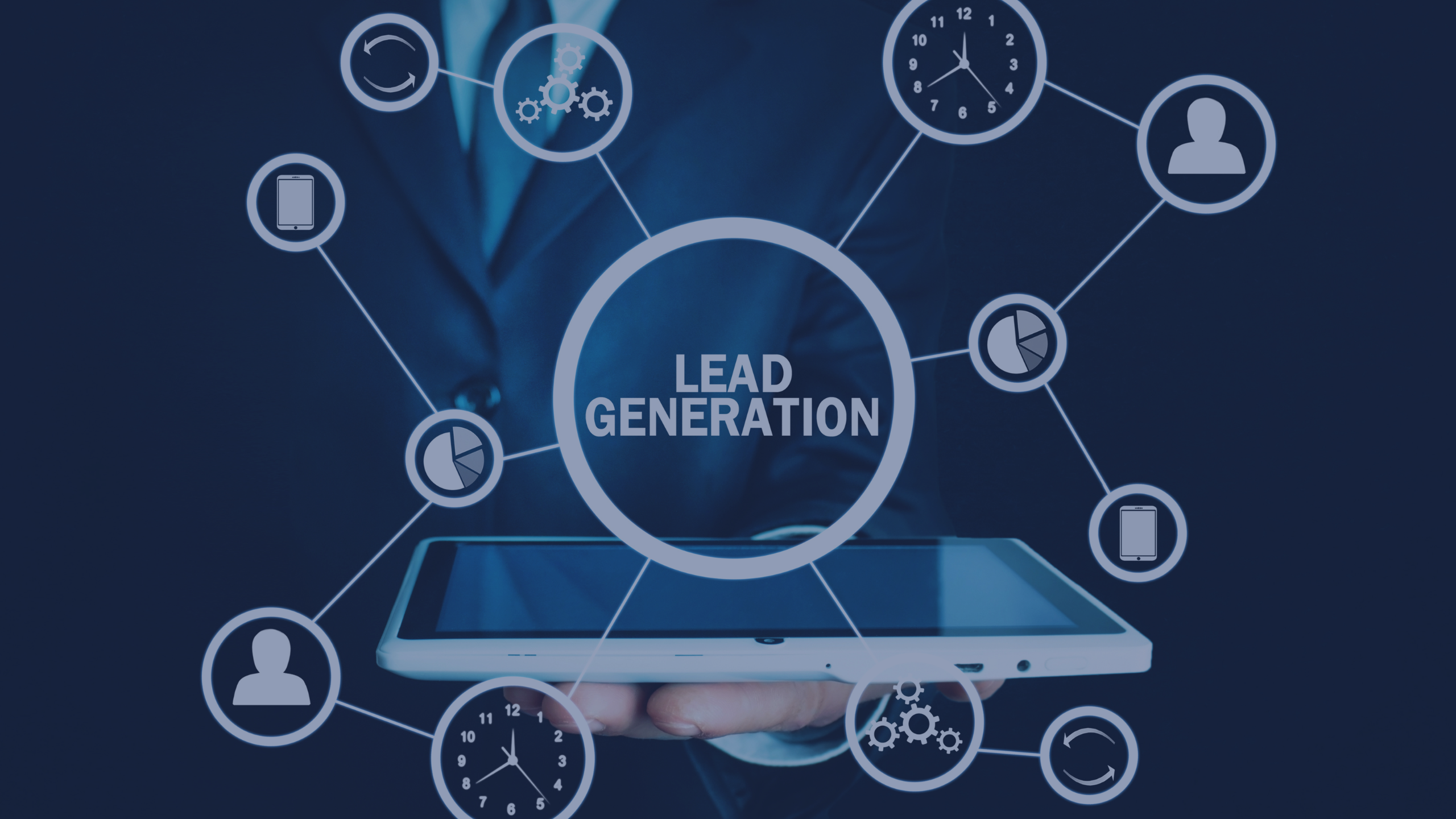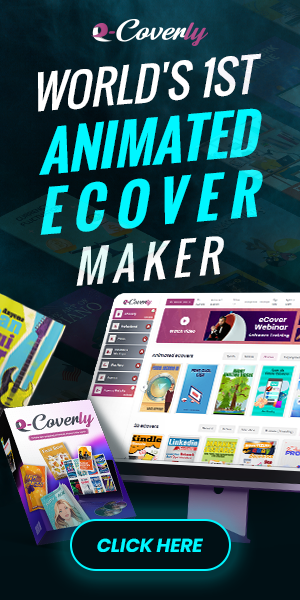Email Marketing For Lead Generation
As a business owner, you are aware of how important lead generation is to your company's success. Leads are potential clients who have expressed interest in your product or service. Each effective marketing plan must include lead generation, the act of locating and developing new clients.
The production of leads is crucial for a number of reasons.
It first enables you to establish connections with possible clients. You may target them with marketing messages that are more likely to connect with them by finding people who are interested in your good or service.
Second, it aids in corporate expansion. You have more chances to turn those leads into clients and boost your income the more leads you create. Finally, it aids in evaluating the effectiveness of your marketing initiatives. You may evaluate the success of your marketing activities and make data-driven decisions about how to improve them by keeping track of the quantity and caliber of leads produced.
One of the most efficient methods for generating leads is email marketing. Email is an effective marketing tool because it lets you send tailored communications right to the inboxes of potential clients. Using email, you may divide your audience into different groups based on their interests, actions, or other characteristics, and then customize your communications to each group. This increases the relevance and appeal of your communications, which may encourage individuals to take action.
The effectiveness of email marketing in generating leads may be attributed to a number of factors. First of all, email is a cheap marketing technique. Because it is far less expensive than conventional marketing strategies like direct mail or print advertising, it is the best option for companies of all sizes. Second, email advertising offers excellent measurement.
To obtain a detailed view of how your campaigns are doing, you may measure openings, clicks, conversions, and other analytics. Your campaigns may be optimized using this information, and your results will gradually get better. Lastly, email is a flexible tool that can be utilized from lead generation through client retention at any point in the customer experience.
There are a few key practices to remember when utilizing email marketing for lead creation.
First, make sure your emails are audience-relevant and targeted. This entails breaking up your email list into several segments and targeting different audiences with messages depending on their interests, actions, or other demographic data.
Second, utilize attention-grabbing subject lines and interesting content to draw readers in and persuade them to take action. Lastly, provide incentives like discounts, freebies, or access to special material to encourage individuals to sign up for your email list.
Any business that wants to succeed must generate leads, and email marketing is one of the best methods for doing so. You may cultivate relationships with potential clients, expand your brand, and assess the performance of your marketing initiatives by sending customized communications straight to people's inboxes. You'll be well on your way to expanding your business through email marketing if you keep these best practices in mind.
Building an email list
Email marketing continues to be one of the most efficient marketing platforms for organizations in terms of generating leads and increasing conversions. Nevertheless, you need a list of recipients before you can start sending emails. Each effective email marketing strategy must start with the creation of an email list. Here are some pointers for creating an email list that is specifically targeted, best practices for managing email lists, and an explanation of how to segment your email list for more precise targeting.
Tips for Building a Targeted Email List
Provide something valuable: In order to get individuals to subscribe to your email list, make a valuable gift in return for their email address. This may be a free ebook, a coupon, or exclusive access to information.
Use social media: Promote your email list on social media to get people to join up. Provide a call to action that is obvious and a link to your signup form.
Gather email addresses at events: If you go to trade exhibitions, conferences, or other gatherings, ask people who show interest in your goods or services for their email addresses.
Create a registration form and upload it to your website to make it simple for visitors to subscribe to your email list. Make sure it's simple to fill out and display in a visible place.
Use your current clientele: If you already have a clientele, ask them to join your email list. You may also nudge them to tell their loved ones about your email list.
Best Practices for Email List Management
Clean up your list: Maintain a regular purge of inactive subscribers from your email list to make sure that only those recipients are receiving your communications.
Respect opt-out requests: You should always respect subscribers' wishes to stop receiving your emails. Failure to do so may result in reputational harm and legal problems.
Use double opt-in: To ensure that consumers truly want to receive your emails, use a double opt-in method. By doing this, you may reduce spam complaints and raise the caliber of your email list.
Organize your list into smaller groups depending on predetermined criteria, such as geography, hobbies, or behavior. This process is known as segmentation. This might assist you in sending more relevant communications to your audience that is more likely to connect.
Test and improve: To boost the effectiveness of your email messages, regularly test and make improvements. To determine what appeals to your audience the most, experiment with alternative subject lines, content, and calls to action.
Segmenting Your Email List for Better Targeting
Sending more tailored emails to your email list is possible with the use of the effective strategy known as segmentation. You may send communications to each group that is more pertinent to them and more engaging by segmenting your list into smaller groups based on predetermined criteria. Following are some typical segmentation factors to take into account:
Location: Use your list's location segments to deliver messages that are customized for recipients in particular areas.
Send communications that are pertinent to people depending on their interests, preferences, or behaviors by segmenting your list based on their interests.
Purchasing patterns: Use your list's purchasing patterns to segment it and send messages promoting goods and services you think the recipients would find interesting.
Email engagement, including opens, clicks, and conversions, may be used to segment your list. Identifying your most active subscribers will enable you to offer them more personalized communications.
Each effective email marketing strategy must start with the creation of a focused email list. You can create a high-quality email list that's more likely to provide quality leads by providing something of value, using social media, gathering email addresses at events, adding a registration button to your website, and leveraging your current client base. Once you have a list, it's critical to properly maintain it by keeping it clean, respecting opt-out requests, implementing double opt-in, and routinely testing and refining your campaigns.
An additional essential element of effective email marketing is segmenting your email list. You may deliver more targeted communications to your audience by segmenting your list into smaller groups according to predetermined criteria. You may deliver more pertinent and interesting communications to your subscribers by segmenting your list, whether you do it based on location, hobbies, purchasing behavior, or engagement.
The effectiveness of email marketing as a lead generation and conversion technique depends largely on the caliber of your email list. You may create a focused email list that's more likely to produce high-quality leads and encourage conversions by using the advice and best practices provided in this article. Also, you can gradually raise the effectiveness of your email marketing by segmenting your list, testing, and tweaking your campaigns on a regular basis.
Crafting effective emails
Each email marketing strategy must succeed by creating powerful emails. While having a solid email list is important, whether or not an email will result in leads and conversions ultimately depends on its content. Here are some best practices for email design and copywriting, a guide on generating catchy subject lines, and advice on how to personalize emails to boost engagement.
Best Practices for Email Design and Copywriting
Make it simple: Your email layout and content should be uncomplicated and unambiguous. To prevent overloading your viewers, choose simple, easy-to-read fonts and utilize a minimal amount of visuals and pictures.
Make it mobile-friendly: More and more individuals are using their mobile devices to access their email. Use a responsive design for your emails and a typeface that's easy to read on a tiny screen to make sure they are mobile-friendly.
Employ a call to action that is clear: Each email should have a call to action that is explicit and instructs the reader on what to do next. Make sure the call to action is prominently displayed and use language that is action-oriented.
Be dependable: To strengthen your brand and gain your audience's trust, keep your branding and messaging consistent throughout all of your emails.
Test and improve: To boost the effectiveness of your email messages, regularly test and make improvements. To determine what appeals to your audience the most, experiment with different styles, layouts, and copy.
Creating Compelling Subject Lines
Your email's subject line is the first thing the recipient sees, and it influences whether or not they open the message. The following are some pointers for writing captivating subject lines:
- Keep it short and sweet: Aim for a subject line that's 50 characters or less.
- Make it personalized: Use the recipient's name or other personal information to make the email feel more personal.
- Be specific: Use specific numbers or details to make the email more enticing.
- Use action-oriented language: Use action verbs to create a sense of urgency and encourage the reader to open the email.
- A/B test your subject lines: Try out different subject lines and see which ones generate the most opens and clicks.
Personalizing Emails to Increase Engagement
Customization is an effective strategy for raising email engagement. The following advice can help you personalize your emails:
- Use the recipient's name: Address the recipient by name to make the email feel more personal.
- Segment your list: Use segmentation to send more targeted messages to specific groups of subscribers.
- Use dynamic content: Use dynamic content to display personalized information based on the recipient's location, interests, or behavior.
- Use triggered emails: Use triggered emails to send automated messages based on specific actions, such as abandoned carts or completed purchases.
- Use personalization in the subject line: Use personalization in the subject line to grab the reader's attention and increase the chances of them opening the email.
Each successful email marketing plan must include an excellent email design. You can improve engagement with your subscribers and increase leads and conversions by utilizing best practices for email design and copywriting, coming up with catchy subject lines, and personalizing your emails. You may enhance the efficiency of your email marketing over time by testing and improving your campaigns while maintaining consistency with your branding and messaging.
Automating your email marketing
Automating your email marketing is a great method to organize your campaigns, save time, and provide timely and relevant material to your subscribers. The advantages of email automation, best practices for developing automated email campaigns, and pointers for streamlining email automation workflows will all be covered in this section.
Benefits of Email Automation
You may deliver targeted and customized messages to your subscribers at the appropriate moment by using email automation. Email automation has several advantages, such as:
- Saving time: With email automation, you can set up your campaigns in advance and let them run on autopilot, freeing up your time to focus on other tasks.
- Improving engagement: By sending more targeted and relevant messages to your subscribers, you can increase engagement and build stronger relationships with your audience.
- Increasing conversions: Automated emails can help you generate more leads and sales by sending timely and personalized messages to your subscribers.
- Improving ROI: By saving time and generating more leads and sales, email automation can provide a strong return on investment.
Best Practices for Creating Automated Email Campaigns
Establish your objectives before you start building your automated email campaigns to make sure they are in line with your entire marketing plan.
List segmentation allows you to develop customized automated marketing for particular subscriber groups based on their interests, actions, or past purchases.
Develop intriguing content by combining excellent language with eye-catching images to produce material that connects with your audience.
Add calls to action that are crystal clear: Each automated email should have a call to action that is crystal clear and urges the reader to do something specific, like buying something or going to your website.
Test and improve: To make your automated email marketing work better over time, regularly test and make improvements to them.
Tips for Optimizing Email Automation Workflows
- Use triggers: Use triggers to automate your campaigns based on specific actions or behaviors, such as abandoned carts or completed purchases.
- Personalize your messages: Use personalization to make your automated messages feel more personal and relevant to the recipient.
- Use dynamic content: Use dynamic content to display personalized information based on the recipient's behavior or interests.
- Monitor performance: Monitor the performance of your automated email campaigns regularly and adjust them as needed to ensure optimal performance.
- Integrate with other marketing tools: Integrate your email automation workflows with other marketing tools, such as your CRM or social media platforms, to create a more cohesive and effective marketing strategy.
For organizations wishing to streamline their email marketing efforts, increase leads and sales, and more, email automation may provide a variety of advantages. You can design more focused and customized campaigns that engage your audience and encourage conversions by adhering to best practices for developing automated email campaigns and streamlining your operations. To guarantee that your initiatives continue to perform well over time, regular testing and tweaking are crucial.
Measuring success and optimizing your strategy
Making sure that your campaigns are successful and offer a significant return on investment requires measuring performance and always improving your email marketing approach. In this part, we'll go over the most important email marketing metrics you should be monitoring, best practices for gathering and evaluating data, and advice on how to enhance your email marketing strategy through data-driven decisions.
Key Email Marketing Metrics
- Open rate: The percentage of recipients who opened your email.
- Click-through rate (CTR): The percentage of recipients who clicked on a link in your email.
- Conversion rate: The percentage of recipients who completed a desired action, such as making a purchase or filling out a form.
- Bounce rate: The percentage of emails that were undeliverable.
- Unsubscribe rate: The percentage of recipients who unsubscribed from your email list.
Best Practices for Tracking and Analyzing Data
Employ a reliable email service provider: To evaluate the success of your campaigns, choose an email service provider that provides comprehensive tracking and analytics capabilities.
Set up tracking properly: Verify that all pertinent statistics, such as openings, clicks, and conversions, are tracked by your email service provider.
Regularly assess campaign performance to make necessary adjustments to raise the effectiveness of your efforts.
Examine your data to find trends: Look for patterns and trends in the performance of your email marketing.
Employ A/B testing: Test several email marketing components, such as subject lines and calls to action, to see which works the best.
Tips for Making Data-Driven Decisions
- Set clear goals: Define clear goals for your email marketing campaigns and use data to measure progress towards those goals.
- Use data to inform content and messaging: Use data to identify what types of content and messaging resonate with your audience and adjust your campaigns accordingly.
- Segment your list: Use data to segment your list and create targeted campaigns for specific groups of subscribers based on their interests or behavior.
- Test and optimize: Regularly test and optimize your campaigns based on data to improve their performance over time.
- Use data to inform overall marketing strategy: Use data from your email campaigns to inform your overall marketing strategy and ensure that all of your marketing efforts are aligned.
To make sure that your email marketing initiatives are successful and offer a significant return on investment, it is crucial to track their performance and use data to refine your plan. You can develop more focused and efficient campaigns that engage your audience and increase conversions by collecting and analyzing important email marketing metrics, utilizing best practices for data tracking and analysis, and making data-driven choices. To guarantee that your initiatives continue to perform well over time, regular testing and optimization based on data are essential.
Lead generation and business growth may both be greatly aided by email marketing. You may create a focused email list, write persuasive emails, automate your campaigns, and track results to gradually improve your approach by adhering to the best practices described in this article.
These are the main ideas to remember from this article:
- Lead generation is crucial for business growth, and email marketing can be an effective tool for generating and nurturing leads.
- Building a targeted email list is important for ensuring that your emails reach the right people and are more likely to result in conversions.
- Best practices for email list management include obtaining consent, ensuring your list is up-to-date and accurate, and using segmentation to create targeted campaigns.
- Crafting effective emails involves designing eye-catching templates, writing compelling copy, and personalizing emails to increase engagement.
- Email automation can help you save time and improve the effectiveness of your campaigns by automating tasks such as welcome messages, drip campaigns, and abandoned cart reminders.
Tracking important email marketing metrics, studying data to see trends and patterns, and making data-driven choices are all necessary for measuring success and fine-tuning your plan.
Now is the perfect moment to begin using email marketing for lead generation in your own company, if you haven't previously.
You may design more focused and successful campaigns that engage your audience and encourage conversions by adhering to the best practices described in this article. The advice and suggestions in this article can help you advance your email marketing efforts, regardless of whether you're just getting started or want to improve your current campaigns. Why not begin right away and get the rewards for yourself?











